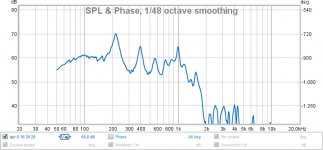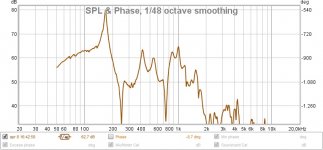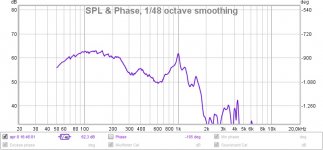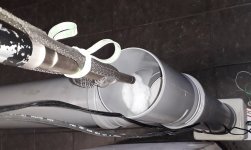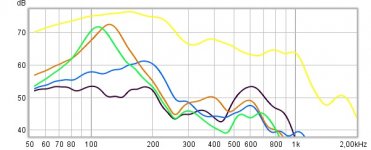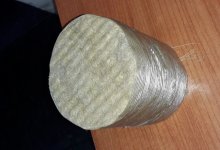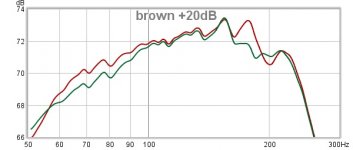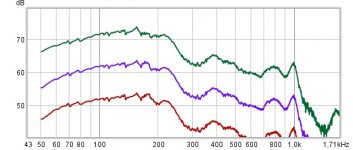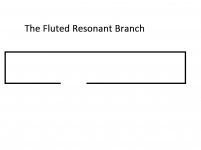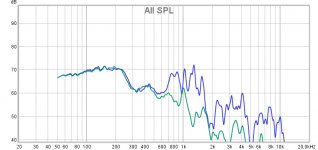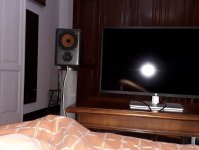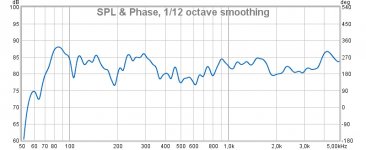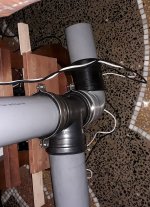I added a resonant branch.
The position is critical.
It seems to me that it has the maximum effect if placed near the exit.
It has a narrow band: damping is required.
Blue: only the empty port;
Brown: adding a 32cm resonant branch;
Violet: adding acrylic in the branch, empty TL
The position is critical.
It seems to me that it has the maximum effect if placed near the exit.
It has a narrow band: damping is required.
Blue: only the empty port;
Brown: adding a 32cm resonant branch;
Violet: adding acrylic in the branch, empty TL
Attachments
It seems to me to retrace the history of electroacoustics ... 
Some figures moving a cylinder of heavy absorbent 12cm, along the pipe, stuffed box:
green: in the throat
brown: intermediate position
blue: intermediate position
black: to the mouth
yellow: empty pipe
Some figures moving a cylinder of heavy absorbent 12cm, along the pipe, stuffed box:
green: in the throat
brown: intermediate position
blue: intermediate position
black: to the mouth
yellow: empty pipe
Attachments
... and what about a FRB?
A Helmholtz resonator acts as a bass band. A tube closed at one end resounds at the fundamental frequency and harmonics.
Resonances in boxes often contain fundamental and harmonics.
Why prefer Helmholtz?
How does a fluted resonant branch behave?
Will it have one or two frequencies of action?
If they are multiple, will they be independent or related?
Will it be possible to use a FRB to increase the bandwidth of a resonant pipe adsorber?
A Helmholtz resonator acts as a bass band. A tube closed at one end resounds at the fundamental frequency and harmonics.
Resonances in boxes often contain fundamental and harmonics.
Why prefer Helmholtz?
How does a fluted resonant branch behave?
Will it have one or two frequencies of action?
If they are multiple, will they be independent or related?
Will it be possible to use a FRB to increase the bandwidth of a resonant pipe adsorber?
Attachments
The resonance group 0.7-1.5 kHz originates in the box.
I tried to use helmholtzen, branches, different fillings, but I have the best result by covering the free walls with 4cm of polyurethane.
Blue: empty box
green: 4cm polyurethane over 3 walls
Any experience?
I tried to use helmholtzen, branches, different fillings, but I have the best result by covering the free walls with 4cm of polyurethane.
Blue: empty box
green: 4cm polyurethane over 3 walls
Any experience?
Attachments
[AUTOQUOTE] It seems to me to retrace the history of electroacoustics ...
I think I should move to managing the back radiation with a correctly aligned bandpass.
However, I will jump to an era where watts and drivers are available cheaply.
I ask forgiveness for the amount of OT interventions.
- Status
- This old topic is closed. If you want to reopen this topic, contact a moderator using the "Report Post" button.
- Home
- Loudspeakers
- Subwoofers
- Internal narrow-band absorption techniques?
